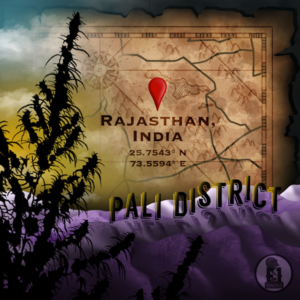Landrace Cannabis Seeds
Showing all 6 resultsSorted by popularity
What Are Landrace Strains?
Landrace cannabis strains are the original, pure cultivars grown in their indigenous regions, naturally adapting over centuries to their specific environments. These strains developed distinct traits due to their surroundings and the cultivation efforts of local farmers. Unlike modern hybrids, landraces remain pure and untainted, deeply connected to the geographical areas where they originated. Some well-known examples include Colombian Gold, Durban Poison, and Afghan Kush.
- Landrace strains are available at their original genetic level, preserving the foundational qualities that have shaped cannabis cultivation.
- They are essential for genetic preservation, offering unaltered traits for breeders and collectors.
The Global Origins of Landrace Strains
Landrace strains originate from diverse regions across the world, including Africa, Central and South America, South and Southeast Asia, and the Middle East. These plants naturally adapted to their local climates, soils, and conditions, resulting in distinct physical characteristics and genetic profiles.
The Hindu Kush region of Pakistan and Afghanistan is one of the most renowned sources of landrace strains, contributing some of the most iconic indica cultivars. Likewise, tropical climates such as Thailand and Jamaica have given rise to legendary sativa strains. Examples include:
- Thai Sativa – A tropical landrace known for its unique adaptation to humid environments.
- Zulu Sativa – A rare, pure sativa cultivated by the Zulu people in Africa.
- Pakistani Indica (Hindu Kush) – Valued for its resilience and adaptability.
These cultivars not only represent their regions of origin but also reflect the deep relationship between humans and cannabis, as generations of farmers nurtured and refined them for traditional uses such as food, fiber, and medicine.
Why Are Landrace Strains Important?
Landrace strains are the foundation of cannabis breeding. Without these original genetics, the vast diversity of modern cannabis cultivars would not exist. Breeders have used landraces to develop hybrids with traits such as:
- Faster flowering times
- Higher yields
- Increased resistance to pests and diseases
- Unique cannabinoid and terpene profiles
Beyond their role in shaping the cannabis industry, landrace strains are critical for preserving genetic diversity. In an era of widespread hybridization, they serve as a genetic reservoir, ensuring future breeding potential for resilience, climate adaptability, and evolving medical or recreational applications.
The Rarity of Pure Landrace Genetics
Authentic landrace strains are increasingly rare. Many of the original genetics have been diluted due to crossbreeding, as commercial growers prioritized hybridization over preservation. True landrace strains are difficult to find, as most available cultivars have undergone some level of genetic mixing.
While some strains are marketed as “pure,” they may not be true landraces unless they have remained untouched by modern breeding. Pure landrace strains, unaltered and preserved in their indigenous regions, are highly valued by collectors and breeders for their authenticity and historical significance.
Notable Landrace Strains
Here are a few landrace strains that exemplify the diversity and uniqueness of these original genetics:
- Colombian Gold – A classic sativa from the Colombian mountains.
- Durban Poison – A South African sativa with deep-rooted indigenous origins.
- Nepalese Highland – A robust Himalayan strain adapted to extreme altitudes.
Additional indigenous cultivars from Egypt, Mexico, India, and many more regions continue to be discovered and preserved.
These strains are not only valuable for their unique growth characteristics but also for their role in cannabis history.
Challenges in Preserving Landrace Strains
Over the centuries, many landrace strains have been lost due to the relentless pursuit of higher yields and increased potency. Breeders historically sought to “improve” cannabis through hybridization, often at the expense of preserving original genetics. As a result, the genetic diversity of cannabis has diminished.
Today, conservation efforts are essential to ensure these strains are not lost forever. Landrace cultivars provide the raw materials needed for new breeding projects and represent an important part of the cultural and ecological heritage of cannabis.
Cultivating and Accessing Landrace Seeds
For those interested in growing or preserving landrace strains, seeds are available in both feminized and regular varieties. While feminized seeds offer consistency and simplicity, regular seeds allow experienced growers to maintain pure genetics and create their own indigenous cultivars.
Authentic landrace seeds remain highly sought after by collectors, connoisseurs, and breeders who appreciate their historical value and genetic purity. Despite their rarity, these seeds continue to be accessible worldwide, ensuring that the legacy of pure cannabis genetics is preserved for future generations.
Conclusion
Landrace cannabis strains represent the untainted foundation of modern cannabis. These original cultivars embody the biodiversity and historical lineage of the plant. While many have been lost or diluted, the remaining landrace strains are invaluable for their genetics, their contribution to cannabis breeding, and their cultural significance.
Preserving these strains is essential—not only for historical appreciation but also for the future of cannabis breeding and cultivation. Whether you are a grower, breeder, or enthusiast, cultivating landrace strains is a meaningful way to honor the plant’s origins and ensure its continued evolution for generations to come.






